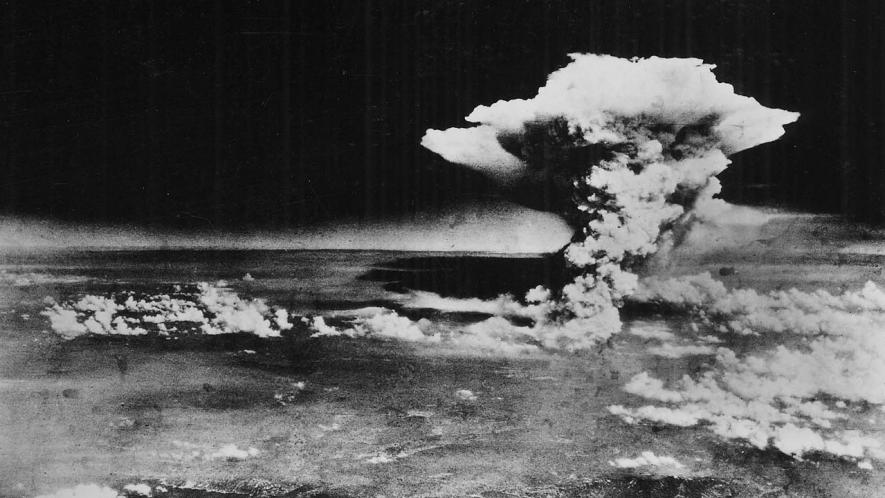False Missile Alert in Hawaii Stokes Fears of Nuclear War in an Increasingly Dangerous World

An emergency alert warning of an incoming ballistic missile sent Hawaii into panic, sowing fears of a massive war which could lead to a nuclear holocaust.
The alert was accidentally triggered by an employee at the state Emergency Management Agency who pushed the "wrong button" during a routine internal test as part of a shift change.
The alert message which was sent to Hawaiians as messages to their mobile phones and which was broadcast on television and radio said, "EMERGENCY ALERT BALLISTIC MISSILE THREAT INBOUND TO HAWAII. SEEK IMMEDIATE SHELTER. THIS IS NOT A DRILL."
Mobile phone users received the message at 08:07 (18:07 GMT).
"Although the state emailed that the alert was a mistake at about 8:25 a.m., they did not issue a cell phone alert correction — the way many residents first learned of the bogus alert — until about 38 minutes after the initial mistake," reported the Honolulu Star Advertiser.
The alert led to Hawaiians taking shelter in mall bathrooms, bathtubs, and even under manholes. “For others, a resigned acceptance, thinking that staring at the beauty of Hawaii was not a bad way to go,” said a BBC report. “There were reports of people speeding down highways and running red lights to reunite with family members. Others called one another to say “I love you” one last time,” The Atlantic reported.
David Ige, the Democratic governor of Hawaii, apologised for the mistake.
"It was a procedure that occurs at the change of shift where they go through to make sure that the system, that it's working. An employee pushed the wrong button," Ige said.
"I was awakened by the alert like everyone else here in the state of Hawaii. It was unfortunate and regrettable. We will be looking at how we can improve the procedures so it doesn't happen again," he added.
Hawaii, located in the central Pacific Ocean, is one of the US states closest to North Korea, which has been developing ballistic missiles which can carry nuclear warheads and which are capable of hitting the United States.
US President Donald Trump had, in his address to the United Nations General Assembly in September 2017, had threatened to “totally destroy North Korea”. Trump had said earlier that “all options are open” against North Korea, and had despatched aircraft carriers and submarines towards the Korean peninsula in June 2017.
The USA’s sabre-rattling has not deterred North Korea. The latter has instead redoubled its efforts to beef up military capabilities which it believes are necessary to prevent the country from suffering the fate of Iraq and Libya.
The incidents in Hawaii have brought to the spotlight how close the world could be to nuclear war. Observers have drawn attention to the possibility of a technical glitch or radar detection error leading to the US accidentally launching a retaliatory attack, triggering a nuclear confrontation which would be difficult to stop once it begins.
An article by Max Fisher in The New York Times recalled the tragedy of the Korean Air Lines Flight 007, which was shot down by the Soviet air defence, mistaking it for an American spy plane after it strayed into Soviet airspace. The incident almost took the US and the Soviet Union to the brink of war.
Officials, faced with technical misreadings which suggested an attack, often "had mere minutes to decide whether to retaliate against seemingly real or impending attacks without being able to fully verify whether an attack was actually underway. In the logic of nuclear deterrence, firing would have been the rational choice," Fisher writes.
This was brought home sharply in Stanley Kubrick's classic satire Dr. Strangelove or: How I Learned to Stop Worrying and Love the Bomb (1964) which portrayed the dangers of nuclear weapons and war-mongering.
As an insane, rogue US Air Force Brigadier General leads a nuclear attack on the Soviet Union, the top military brass of the US including the President gather at the Pentagon's War Room to discuss what can be done to avoid disaster. In a memorable scene, General Buck Turgidson, the Air Force Chief of Staff argues for of an all-out attack before the Soviets could retaliate:
"In less than 15 minutes from now the Russkies will be making radar contact with the planes. When they do they will go absolutely ape and strike back with everything they've got. If, prior to this time we have done nothing to suppress their retaliatory capabilities we will suffer virtual annihilation. If, on the other hand we immediately launched an attack on their airfields and missile bases we'd stand a good chance of catching them with their pants down."
The Koreas move ahead with talks
North Korea and South Korea, meanwhile, held talks on Monday at the truce village of Panmunjom to discuss North Korean plans to send an artist troupe to the Winter Olympics scheduled to be held in PyeongChang, South Korea from 9 to 25 February.
Earlier North Korean leader Kim Jong-un made diplomatic overtures and expressed the desire to send an athletic team to the Winter Olympics, while South Korea agreed to postpone its joint military drills with the United States until the Olympics is over. The two Koreas have agreed to hold working-level talks on Wednesday to discuss details of North Korea’s participation in the Winter Olympics.
Get the latest reports & analysis with people's perspective on Protests, movements & deep analytical videos, discussions of the current affairs in your Telegram app. Subscribe to NewsClick's Telegram channel & get Real-Time updates on stories, as they get published on our website.























